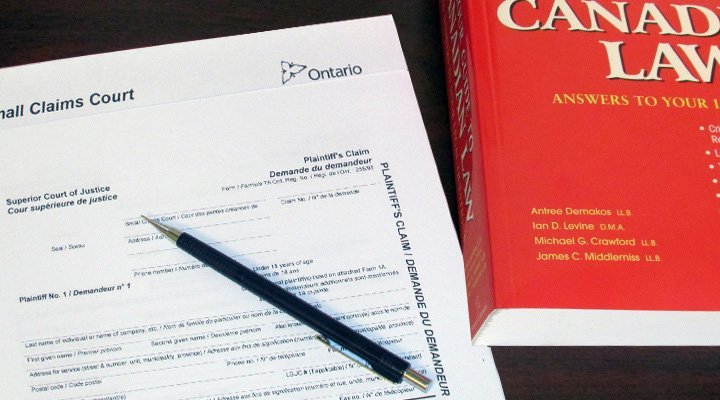Preparing, Issuing and Serving a Plaintiff’s Claim

Preparing a Plaintiff’s Claim
The following is not a comprehensive text on how to prepare, issue and serve a Plaintiff’s Claim in small claims court but, rather, a general overview in order to give the reader a general idea of the process. It is not to be considered as legal advice or an instruction on how to prepare a Claim or its pleadings.
In order to sue a person or a company, it is important to properly identify the person or company that you are going to sue. If you are suing a person who you may know as Bob, when his proper name is Robert, suing Bob may not be sufficient. If you are suing a company that you know as Fran’s Cakes (name made up), when the proper name of the company is Fran’s Cakes and Baking Accessories Limited, suing Fran’s Cakes, would not be sufficient. While you could obtain judgment against either entity with the wrong name, when you go to enforce on the judgment, you may have problems and may have to try to amend the name or, in the worst case, have to start your action all over again.
Next you have to determine how much you should claim against the Defendant or Defendants, as the case me be. That amount will be referred to as your damages. In some cases it is simple to know the amount of your damages - for example where it is based on a contract - while in other cases determining the amount of your damages may be more complicated and not as apparent - such is in a personal injury matter or in an action for defamation.
To prepare your claim, you provide to the court and the Defendant a written description of what occurred and why you are suing. This is called the “pleadings”. This sounds straightforward but it can be a little bit difficult to do. The tendency for many self-represented Plaintiffs will be to write the entire story of what occurred in detail, perhaps thinking that this will help the judge see the Plaintiff’s side clearly. In actual fact, in my experience, it does not. It may help to remember that what you write (plead) is not evidence. It is merely your account of what occurred. It is only evidence that the court may rely on when you tell the judge about your case at a trial and you are in the witness box giving sworn or affirmed oral testimony. The general rule when preparing your claim is to make your pleadings brief, succinct, and to the point. Avoid pleading evidence, just plead the facts of the matter. You are also supposed to attach to your Claim any documents that are relevant to your matter to prove your claim.
Once you are satisfied that you have named the Defendant(s) correctly, that you have sued for the correct amount as can be proved, that you have prepared your pleadings with attached documents and filled out the proper Plaintiff’s Claim form, you are ready to attend at the court and issue your Claim.
Issuing a Plaintiff’s Claim
Bring enough copies of your Claim with attached documents so that the court can keep one and you will have enough to both serve the Defendant or Defendants and you can also keep a copy of the issued claim for yourself. It is possible, depending on the method of service that you will use, that you may need two issued copies to serve on one Defendant.
The cost to be paid to the Court (Minister of Finance) to issue a Plaintiff’s Claim is $75.00.
As long as your paperwork is accurate and your claim is legible, the court clerk will issue your claim. It will be given a unique number. Once issued, you are then obliged to serve the claim on the Defendant within 6 months of the date that the claim was issued.
Serving a Plaintiff’s Claim
There are various methods that can be used for serving a Plaintiff’s Claim. Those methods are set out in Rule 8 of the small claims court rules. They are too numerous and varied to be set out in this text, but the best service on an individual Defendant is to place the Plaintiff’s Claim in the Defendant’s hand or drop it at his feet if he won’t extend his hand to accept it. This is called personal service. This method of service makes it very difficult for the individual Defendant to successfully argue later that he never received the Claim. There are other methods of service of a Plaintiff’s Claim on a Defendant if personal service cannot be done.
Once the Plaintiff’s Claim is served, the Defendant has 20 days from the date of service in which to file a defence, failing which the Plaintiff may then take steps to obtain a judgment.
To make sure your law suit is done properly, call A. Perlman Paralegal Services Professional Corporation today at (416) 399-4826 or (519) 943-0590.
